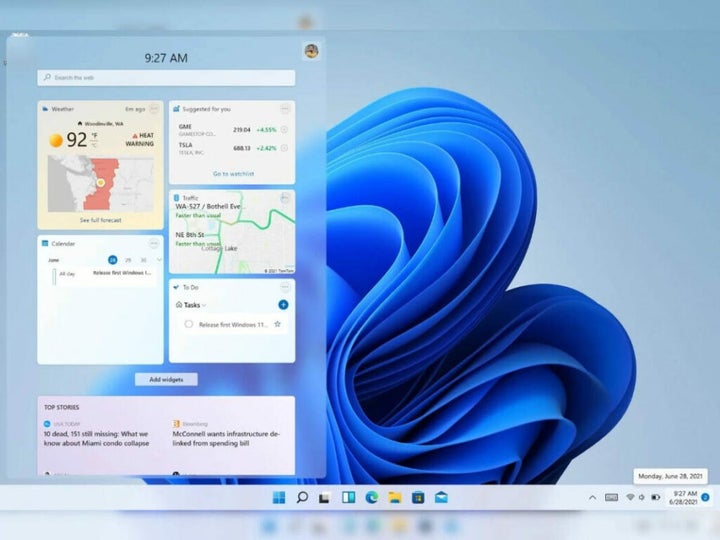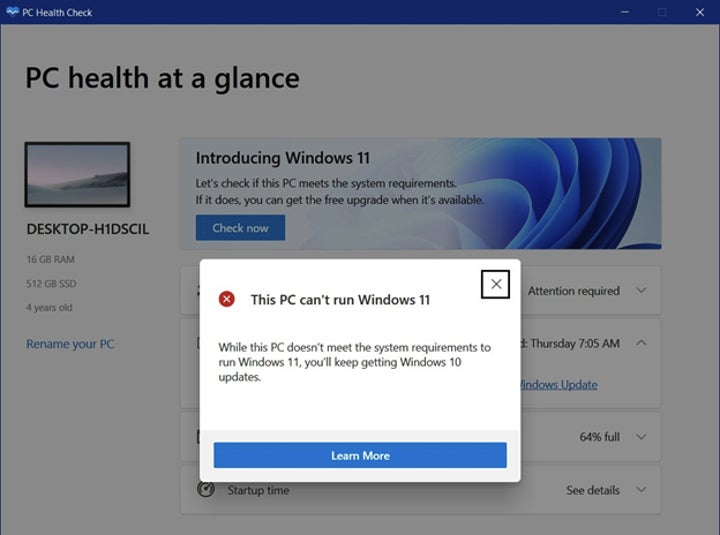News
Is it time to update from Windows 10 to Windows 11?

- November 30, 2022
- Updated: July 2, 2025 at 3:17 AM

The latest version of the Windows operating system (OS), Windows 11, was released in October 2021. Alongside the release, there was also the option for current Windows 10 users to upgrade to the newest version for free. However, it’s been a little over a year since the release, and so far, the uptake of Windows 11 is very slow.
If we look at all versions of Windows currently operating on users’ computers, Windows 11 only makes up 13.6%, barely surpassing Windows 7, which is 10.6%. Windows 7 was released in 2007 and is still used today, despite no longer receiving updates or security patches. Windows 10 is still the preferred operating system and dominates, with 71.9% of all Windows computers running this version.
There are many reasons why you should consider upgrading to Windows 11, just as there are compelling reasons to wait. However, the primary reason why the uptake has been slow is that there isn’t any pressing need to upgrade right now. Windows 10 is still receiving patches and security fixes – so why change the system now?
A spokesperson at Windows explained that Microsoft isn’t worried, and the slow uptake isn’t unusual as they experienced similar trends with Windows 10 and even Windows XP back in the day. Windows is still dominating the market by being the most-bought device in the world, with a 76% market share globally. However, the spokesperson also noted that we might see more urgent incentivized campaigns to get users to switch to the newest OS.

Another major reason why the uptake of the free upgrade is so slow is because of the insane system requirements needed to run the new OS. Windows 11 requires users to have a reasonably new CPU, a large amount of RAM and the security chip known as TPM 2.0. Unfortunately, many current Windows computers don’t meet these requirements. Approximately 55% of business devices used globally won’t meet these requirements.
You’d be wrong if you think the biggest issue with the system requirements is the TPM chip. Many devices purchased today come with this chip already built into the motherboard. The issue is the combination of these requirements, and if they aren’t met, you can’t proceed with the upgrade.
Many users believe that Windows 11 is nothing more than just Windows 10 with a paint job. While it is true that there are many similarities between the two OS, Windows 11 does have a few unique features. Visually it’s much more appealing with rounded edges, a centralized taskbar and pastel colors, but the features go beyond looks. The performance of Windows 11 is much better and faster. The development team spends a lot of time improving memory management to ensure that open apps get allocated more resources than those running in the background. The version also supports Android apps. Returning from a sleep state is also 25% faster due to improvement in RAM suspension.
Since Windows 11 utilizes the TPM chip, the operating system’s security is also much more powerful. This is one of the biggest differences between Windows 10 and the new version. This chip enables SHA-256 encryption, Autopilot, SecureBIO and Windows Defender System Guard.
It also didn’t help that the first release was riddled with bugs and other issues. These issues range from minor annoyances such as slow file transfers to major issues such as the blue screen of death. While updates have been released since this debacle, users are still wary of making the change until all the issues have been addressed.

Windows recently announced that they were returning to a single annual feature update for new operating systems instead of the bi-annual system it’s been using. Security and bug patches will still be released monthly. There are also rumors that Windows is considering returning to releasing a new OS once every three years. Taking this into account, we could see a new operating system by 2024.
If you want to stick with Windows 10, that’s entirely possible for now. However, users that currently use Version 21H1 might want to consider updating to Version 21H2. This is because 21H1 will reach its end-of-life rules on December 13th, 2022. At this point, it will receive no further security or bug patches. Windows 10 Version 21H2 is a newer version and will continue to receive updates and patches for now.
We’re wondering if we’ll see an increase in upgrades to Windows 11 and whether users are just biding their time. It’s apparent that in many cases, if users don’t have to make a change, they’ll stick to what’s familiar and works.
Latest from Leri Koen
You may also like
 News
NewsHow to use the Photoshop Timeline to create animated GIFs and cinemagraphs
Read more
 News
NewsDonald Trump pressures Paramount Pictures to revive his favorite action movie franchise
Read more
 News
NewsAssassin's Creed would already have its first actor for its Netflix series and will also appear in the third season of Euphoria
Read more
 News
NewsStranger Things already has a release date for the three volumes of its final season
Read more
 News
NewsThe developers of Last Epoch confirm that their upcoming expansion will be free and they have not used AI to create it
Read more
 News
NewsAn independent Italian studio could go bankrupt because Steam refuses to publish its new game
Read more